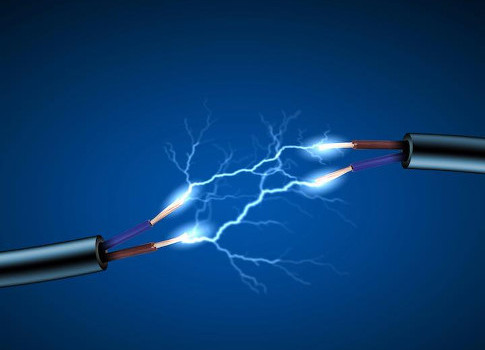TECHNOLOGY FOCUS
This course is focused on the RF modules-through-to-circuits levels, although the choice of appropriate materials is always vitally important. The main technical focus is on microstrip.
In this course to the best of the presenter’s knowledge the details concerning active filters and the modelling of microstrip at millimetre-wave frequencies are provided for the first time.


COURSE CONTENT
This course covers the engineering of RF microminiature modules at circuit level, in depth and breadth. From Day 2 onwards several assignments are set during the course. Application within CAD suites is always a major consideration and course participants are invited to critically appraise such suites in the light of information provided.
Concerning microstrip (also CPW and SIW to a certain extent) the following important aspects are covered: effective permittivity, dispersion, characteristic impedance (Z0), effects of losses, vias, discontinuities, radial stubs, operating frequency limitations and effects of conductor thickness. The choice of appropriate substrate, from circuit-board to semiconductor is considered as well as manufacturing options and challenges.
The instructor will choose examples to present in detail topics based on the interests of the participants.
WHO SHOULD ATTEND
- RF circuit and module designers;
- RF systems designers;
- Engineering managers.

Brief summary of the scope of this course:
- RF Systems: pertinent examples and technologies;
- Logical segmentation of levels:
- Systems
- Subsytems
- Modules
- Circuits
- Components
- Materials
This course is focused on the modules-through-to-circuits levels, although the choice of appropriate materials is always vitally important.
- Currently microwave and millimetre-wave (RF) module design is focused strongly on integrated circuit realisation: monolithic (MMICs) and hybrid (MICs, or “HMICs”). But it certainly wasn’t always so..
- Until around the late-1960s microwave and millimetre-wave was associated with bulky rectangular (metallic) waveguides and valves (‘tubes’) such as klystrons, magnetrons and travelling-wave tubes (TWTs). These types of tubes are still used today where very high RF power is involved.
- Since 1958 “electronics in general” (especially digital technology) had undergone a truly massive transformation with the arrival and progress in monolithic integrated circuits: silicon ICs.
- For decades it was appreciated that RF technology greatly needed a radical re-think – towards RF microminiaturisation.
- In an overall sense the question was being pondered: “why can’t RF technology follow this highly productive route of monolithic integrated circuits”?
- During the 1960s research at various locations (notably Caswell, UK) provided the affirmative answer to this question: although:
- The ‘substrate’ (Cf: circuit board in PCBs) was gallium arsenide (GaAs) – not silicon;
- Device density could never even approach that applicable to digital (also some analogue) ICs – which remains the case today.
- At the module and circuit levels the question arises as to why we can’t continue implementing conventional PCB (PWB) technology. This course will fully answer this question.
Basic “Planar” Transmission Technologies.
- Introduction to ‘Microstrip’, Co-Planar Waveguide (CPW) and Substrate-Integrated Waveguide (SIW).
- Coaxial transmission lines (“RF cables”) – limitations.
- Microstrip technology (structural diagram will be provided and fully discussed).
- Microstrip is particularly important and ubiquitous:
- Like many technologies the basic idea of microstrip began in World War II;
- However, the key original paper was from Grieg & Engelmann (IRE – now IEEE – 1952);
- Analytically (towards basic design) the work of Harold Wheeler in 1964 was seminal;
- Microstrip (also some other technologies) remains the most significant (and prolific) of the RF integration technologies.
- It is important for “hybrid” circuits (HMICs: basically on circuit board) as well as monolithic circuits (MMICs or RFICs: built using semiconductor substrates.
- Aspects of microstrip covered in detail in this course:
- Effective permittivity, Dispersion, Effects of losses, Vias, Discontinuities, Radial stubs, Operating frequency limitations.
- Characteristic impedance (Z0).
- Manufacturing options: HMIC and MMIC. - manufacturing challenges. Effects of conductor thickness.
- Choice of appropriate substrate: from circuit-board to semiconductor.
Assignment/s
Microstrip-based Circuits.
- Directional couplers (general aspects.
- The Lange coupler (a special presentation, including manufacturing challenges)
- Wilkinson couplers.
- Baluns.
Assignments
Microstrip-based Filters.
- Low-pass filters (including applications to transistor bias feeds).
- Band-pass filters (BPFs. Manufacturing challenges).
- Millimetre-wave BPFs.
- In-line microstrip filter structures.
- Implementation of defective ground-plane technology.
- Active filters: example of realisation using high-Z0 lines and varactor diodes.
Assignments
Some Other MIC Transmission Structures.
- Co-planar Waveguide (CPW);
- Aspects of CPW covered in detail in this course – similar to microstrip coverage – see above.
- Conventional and Finite-ground plane CPW.
- Modelling this structure.
- CPW Discontinuities (similar to microstrip coverage – see above).
Introduction to Substrate-Integrated Waveguide Technology (SIW)
- SIW band-pass filters using a unique approach.
Final Assignments
Review of the Course.
Dr. Edwards has written a text that is a recommended reference. The reference is not required for this course.
Title: “Technologies for RF Systems”
by Terry Edwards. Artech House UK. ISBN: 9781630814502,

